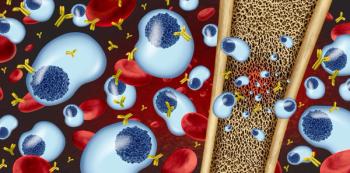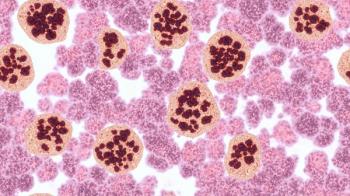
New Study Involves Cancer’s ‘Off-Switch’
New research has identified the binding site where drug compounds could activate a key braking mechanism against the runaway growth of many types of cancer.
Researchers at the University of Michigan Rogel Cancer Center and Case Comprehensive Cancer Center have identified the binding site where drug compounds could activate a key braking mechanism against the runaway growth of many types of cancer. The study findings were published in the journal Cell.
The discovery is a critical step toward developing a potential new class of anti-cancer drugs that enhance the activity of a prevalent family of tumor suppressor proteins, according to the study authors.
Research has previously found that certain molecules were capable of increasing the activity of the tumor suppressor protein PP2A, killing cancer cells and shrinking tumors in cell lines. However, without information about the physical site where the molecules interact with the protein, trying to optimize their properties to turn them into actual drugs would require endless trial and error.
"We used cryo-electron microscopy to obtain three-dimensional images of our tool-molecule, DT-061, bound to PP2A. This allowed us to see for the first time precisely how different parts of the protein were brought together and stabilized by the compound. We can now use that information to start developing compounds that could achieve the desired profile, specificity and potency to potentially translate to the clinic,” said study co-senior author Derek Taylor, PhD, an associate professor of pharmacology and biochemistry at Case Western Reserve University.
The research involved attacking cancer by turning on cancer’s “off switch” by stabilizing protein phosphatases whose malfunction removes a key brake on cancer growth. In the paper, the researchers speculated how a combination of both approaches simultaneously might offer an even more powerful reaction, potentially helping to overcome cancer’s ability to evolve.
The binding pocket that researchers identified provides a starting point for optimizing the next generation of SMAP molecules toward use in the clinic in cancer and potentially other diseases.
Reference
- Turning On the ‘Off Switch’ in Cancer Cells. Michigan Health Lab website. Published April 20, 2020. https://labblog.uofmhealth.org/lab-report/turning-on-off-switch-cancer-cells. Accessed April 21, 2020.
Newsletter
Stay informed on drug updates, treatment guidelines, and pharmacy practice trends—subscribe to Pharmacy Times for weekly clinical insights.



















































































































































































































